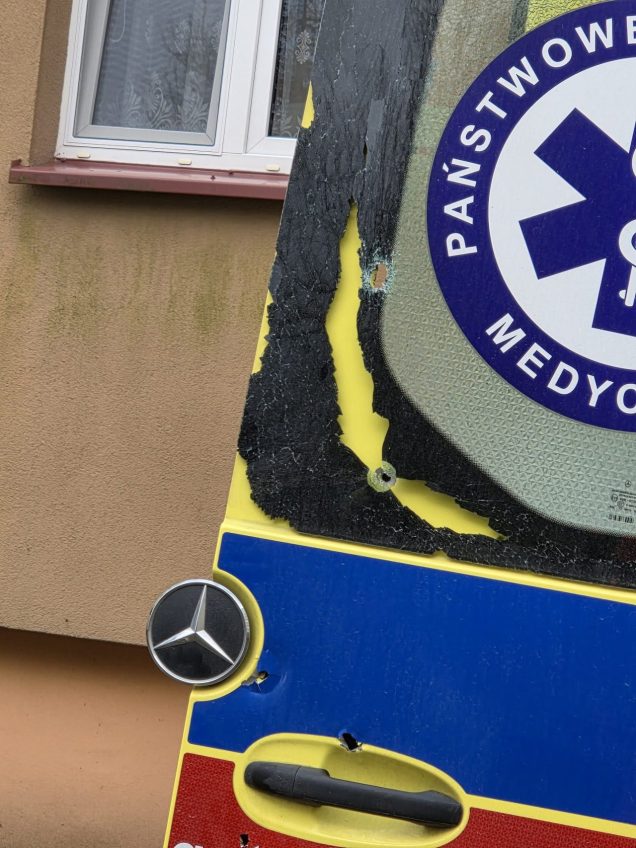On Friday, June 21, 2025, red flags were put up in the “Central” swimming pool in Ustroń Morski and baths were banned. The reason is the concentration of Escherichia coli up to 3889 cjt/100 ml, which is almost 4 times the limit. The wellness department announces further tests on Monday, and beachers are requested to be careful.
Test results and wellness care decision
On Friday, Provincial Inspectors of the Sanitarno-Epidemiological Station in Szczecin took samples of water at the “Central” swimming centre, 1 of the most popular beach areas of Ustronia Morski, located east of Kołobrzeg. survey results, published on Saturday morning by Chief Sanitary Inspectorate (GIS) on the Bath Service, showed more than 3889 cfu/100 ml bacteria E. coli, whereas the permissible standard is maximum 1000 cfu/100 ml.
Therefore on a long of beach dimension 79 metres immediately hung red flags signaling the water condition not suitable for bathing. GIS powerfully emphasised that "water is not suitable for bathing due to microbiological parameters” and urged all beachers to strictly respect the ban.
E. coli – where does it come from and why is it dangerous?
Escherichia coli is simply a bacteria from a group of intestinal chopsticks, essential in the intestinal ecosystem of man, but in the natural environment its presence in besides much concentration indicates fecal contamination. Sources may vary:
- Municipal waste water – failure of the treatment plant or illegal exits to the Baltic,
- Periodic impurities – e.g. after intense rains, erstwhile uncleaned waters enter the sea from the storm system,
- Presence of birds and animals – waste left on the beach or straight in water.
High E. coli concentrations in bathing water may consequence in Gastrointestinal tract infections, diarrhoea, fever, and in the case of people with reduced immunity besides with more serious infections, e.g. urinary tract or bile ducts.
Prohibition restricted to ‘Central’, another open swimming pools
Thankfully. other bathing areas in Ustronie Marine — ‘At the coast’, ‘Fregata’ and ‘Muselle’ — remain open And they didn't see any violations of bacteriological standards. This means that tourists and residents who want to cool down can usage safe sections of the beach. However, GIS recommends:
- Checking the current state of bathing sites online on the GIS Bath Service website,
- Avoid entry into water in the prohibited area,
- Careful reflection of information boards And the flags on the beach.
Bath period under warning
The bathing period in the Zachodniopomorskie Voivodeship started June 15, 2025. This is another place where restrictions have been introduced on E. coli bacteria in fresh days. Last week, akin bans were in force at the swimming pool Oaks in Szczecinwhich shows that the problem of abrupt contamination growth can be seasonally repeated.
In erstwhile years After intense rainfall There were besides contamination of the Baltic waters in the escape areas of rivers and storm canals. This is why the wellness services emphasize that After rainy weather it is worth waiting 24–48 hours before the planned entrance to the water.
What's next? fresh studies on Monday
GIS announced that further sampling at the “Central” Swimming Pool Monday. This means that until then the bath ban remains in force and supervision is increased. After receiving the results of the wellness department:
- He'll lift the ban.if E. coli drops below normal,
- Extends banIf overruns proceed to stay above limit values,
- I will urge checks and possible explanation of the causes contamination in cooperation with local local local authorities and environmental services.
Consequences for tourism and the local economy
A bath ban, although not applicable to the full village, may affect the perception of Ustronia Morski as a safe resort. Tourists who plan to stay on the weekend may resign or choose another bathing areas, which translates into:
- Less turnover in gastronomy and beach services in the ‘Central’ area,
- Reduced gross from parking charges and any water attractions,
- Potential Image Effects – negative comments on social media.
On the another hand, the fast consequence of wellness services and the transparency of communication can build assurance in the institutions, showing that Health and safety are a priority.
Recommendations for beachers
To avoid wellness threats, wellness experts recommend:
- Checking messages on an ongoing basis GIS and local authorities before planning a bath.
- Avoiding bathing after severe precipitation for at least 48 hours.
- Using recommended sections beaches marked with green or yellow flags.
- Washing hands and feet after leaving the beach to remove possible impurities from sand or water.
- Report of distressing symptoms (e.g. abdominal pain, diarrhoea, rash) to your first contact doctor if you have had a bath in water prohibited.
Continued here:
No swimming in the Ustronie Marine. Red flags after almost 4 times exceeding E. coli standards
















